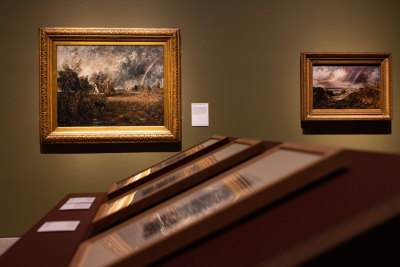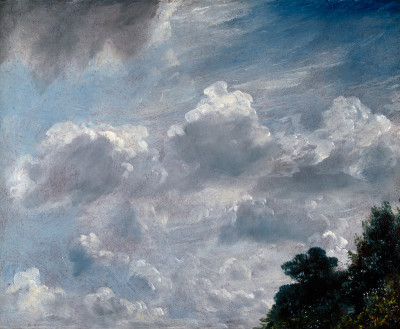Object of the month: June 2015
Object of the month: June 2015
Camille Pissarro, ‘Paysannes Assises (Seated Peasants in an Orchard)’, 1885
By The RA Collections Team
Published 2 June 2015
As he observed the daily life of farming peasants, Pisarro illustrated his belief in an idyllic rural community balancing work with leisure.
-
In October 1999, the Royal Academy received a bequest of 150 works from Carel Weight RA, a donation reflecting the artist’s lifelong association with the RA. The variety of works in the bequest demonstrate Weight’s range of artistic inspirations and his wide network of artist friends and associates, including members of the Pissarro family. Weight held a close friendship with Orovida Pissarro, the granddaughter of Camille Pissarro. The latter’s Paysannes Assises (Seated Peasants in an Orchard) (around 1885, pictured) is one of several works by members of the Pissarro family that came into the RA’s collection through Weight’s bequest.
Camille Pissarro was born in St Thomas in the Antilles, to a Creole mother and French father. At the age of 12, he was sent to boarding school in Passy, where his emerging talent for drawing was encouraged. When he was 17, he returned to St Thomas where his father intended for him to learn the family hardware business, but his passion for drawing and painting led him back to France. Visiting the 1855 Exposition Universelle in Paris was important for his discovery of artists such as Camille Corot, Gustave Courbet and Jean-Francois Millet. Pissarro eventually settled in Montmartre where he became acquainted with Claude Monet, Paul Cézanne and Armand Guillaumin.
Pissarro became one of the key proponents of the Impressionists and is often considered to be the ‘father’ of the movement. He was the only painter to exhibit in all eight of the Impressionist exhibitions between 1874 and 1886. His experimentation with style, approach, colour palette and tone all worked towards capturing as truthfully as possible in his works the immediate feelings provoked by the experience of nature.
From around the 1870s onwards, Pissarro spent much time living with his family in areas outside of Paris including Pontoise, Osny and Eragny-Bazincourt, where his observations of rural French life became the key subject in his work. The portrayal of different sectors of contemporary French society was a major theme of Impressionist art. Pissarro’s observations of the daily life of the farming peasant community reflected his anarchist beliefs, and in particular his support of the ideals found in Pierre Kropotkin’s The Conquest of Bread published in Paris in 1892, which described a utopian vision of a future society composed around a balance of work, rest and leisure activity. For Pissarro, agrarian life was rooted in the principles of cooperation and integration with the cycles of nature, resulting in an ideal, harmonious way of living.
-

Camille Pissarro (1830 – 1903), Paysannes Assises, around 1885.
© Royal Academy of Arts, London.
-
Paysannes Assises is one such work of this period. It shows four women seated in an orchard and the title paysannes means female peasants, identifying the figures in the picture as local working women. The large figural studies of the seated women occupy the majority of the picture. From the late 1870s, Pissarro deliberately enlarged his figures, lending them a sense of monumentality and elevating the simple domestic scene. The central figure carries a scythe, suggesting the women are taking a rest from their recent work of scything grass or hay. Positioned in a circle and engaging with each other, the sense of communal work and rest is emphasised. Any suggestion of hard labour is minimised and instead, the figures appear to be in balance, enjoying the natural shade afforded by the tranquil orchard setting. The fresh tones of white, brown, blue and red of the women’s clothing are set off by the rich greens of their surroundings and the overall impression is one of vitality and restfulness, enhanced by the soft, dynamic markings of Pissarro’s chosen medium of pastel. The female figures do not engage with the viewer and one even has her back to us, suggesting a complete absorption in their way of life.
In his review of the seventh Impressionist exhibition, the novelist and critic J.K. Huysmans commented of Pissarro’s work that, “He paints his country people without false grandeur, simply as he sees them… his peasant girls cutting hay or eating, are all true small masterpieces.”
As a result of Carel Weight’s bequest, the RA Collection demonstrates not only the breadth of British art since its foundation in 1768, but also the important and inspiring networks British artists have had with other artists beyond Britain that are preserved through their connection within the Collection.
Including a gift in your will is one way you could help the RA to protect items in our Collection for the future. To find out more ways your gift could help, contact Legacy Manager, Matthew Watters.
Find out about June’s artist of the month, Alfred Elmore RA.




